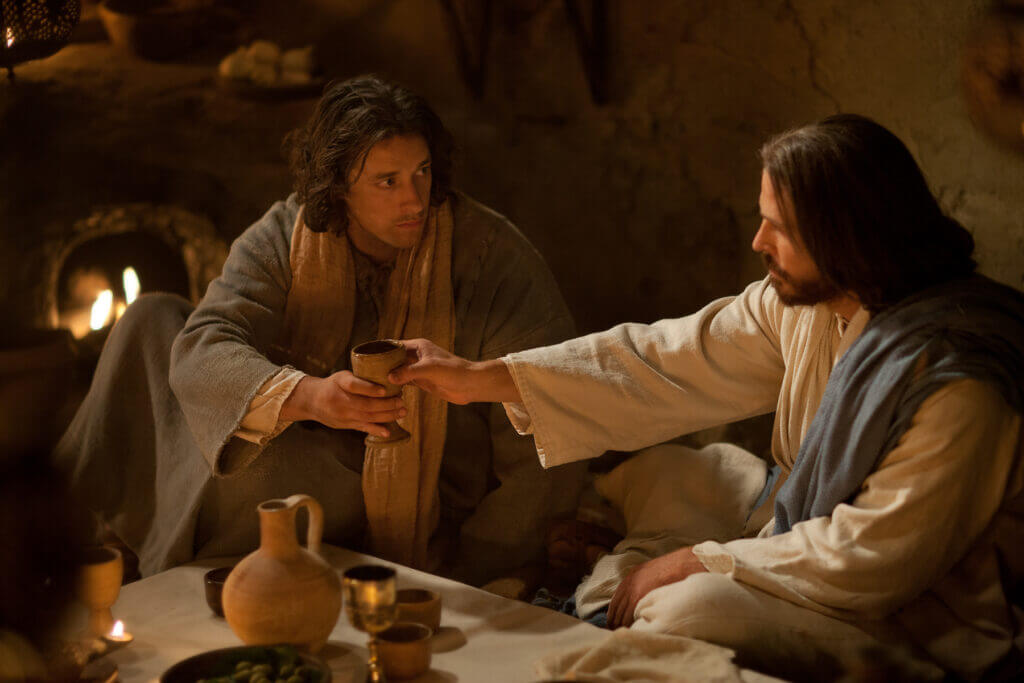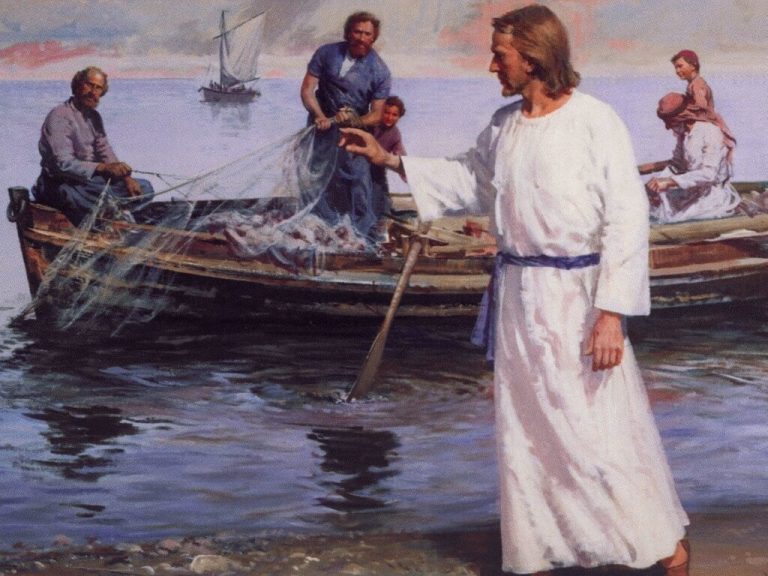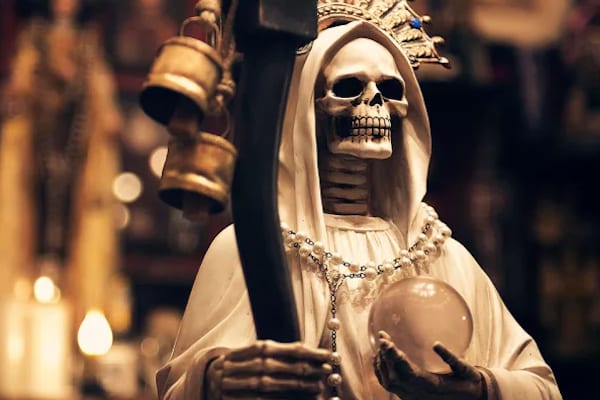The passion of Christ: analysis and interpretation
The Passion of Christ is one of the greatest demonstrations of love that humanity has received, if you want to know about its message and the details of this episode of biblical history and how it is commemorated, join us to know everything in reference to this part of the Passion. life of Jesus.
What is The Passion of the Christ?
We consider it very important to start by clarifying what it is about when they speak to us about the passion of Christ, so that we all enter into context and can make the most of the development and information provided by this article. Based on the Christian religion, the Passion of Christ, which is also called the Passion of Jesus, refers explicitly to the agony and suffering of Jesus of Nazareth, from his prayer in the Garden of Gethsemane to the moment of his death in the cross.
It is possible that many people feel a little confused in the use of the word passion before the suffering of Jesus, the explanation of this is based on the etymology of the word since the Latin word passio derives from the Greek word pati , which translates as suffering, suffering, that is why this episode of the life of Jesus in his passage through the Earth before his ascension to heaven, is referred to as The Passion of Christ, which is then understood as the Suffering, the suffering of Christ.
In the Christian faith, the suffering of Jesus is interpreted as the path to salvation, because it derives in the resurrection of Jesus, being the conclusive proof that Jesus really is the son of God, so knowledge on the Passion of Christ is the way to strengthen our faith based on the reward of eternal life.
So we must recognize from this moment on that when referring to the Passion of Christ, it takes us to the moment of the sufferings of Jesus, all the pain and suffering to which he was subjected after being taken to an unfair and manipulated trial, in which not only the priests but the people condemned him to death, who saw in his religious message a threat to the status quo.
The passion of Christ is evidence of the coherence of Jesus with his message, recognized as the demonstration of the immense and unconditional love of Jesus for his brothers in God, because Jesus did not offer resistance but rather voluntarily surrendered to his captors. With his delivery he saved the lives of those who accompanied him and showed his love to all believers.
If we carry out an analysis from the theological point of view, the Passion of Jesus and his death, is understood as the forgiveness of all sins, not being seen as a traditional sacrifice, since the sacrifice adheres to the spiritual realm recognized and understood as the purest expression of love for God and our brothers, because there is no sacrifice greater than that of Jesus.
Literary sources of the Passion of Christ
It is important to recognize in which books of the Holy Scriptures reference is made to the Passion of Christ and in this article we are going to indicate and point out its content. The passion of Christ is related in the canonical Gospels of Matthew specifically in chapters 26 and 27.
Verse 2 of chapter 26 specifically outlines “You know that in two days the Passover is celebrated, and the Son of Man will be handed over to be crucified” In Matthew chapter 26 from verse 1 to verse 75 we can find in detail each one of the events that Jesus described would happen.
We can recognize in them the betrayal of Judas, whom Jesus would kiss so that his disciples would recognize, also the denial of one of his most beloved disciples such as Peter, to whom Jesus indicated that before the rooster crows, he would deny him three times. This to name the best known passages, the capture of him, the blasphemy of the witnesses, the search by the priests to put him to death.
In chapter 27, the guilt of an innocent, the repentance of Judas for serving to shed the blood of Jesus, is outlined in each of the verses. Pilate’s search to save the life of the righteous is shown, when I ask the people who to save from death if there is Barrabas or Jesus, the people answered that they will crucify Jesus.
Pilate did not want to be part of such a terrible decision and drinking water from the font, he washed his hands as a sign of not participating in the decision. In the reading of each verse of this chapter of Matthew, the pain experienced by Jesus is suffered, when we enter the word, sometimes we even feel part of so much suffering and a little guilty, as an inheritance left by those who accused him being innocent.
Also in the book of Mark in its chapters 14 and 15, the Passion of Christ is referred to, with some details that are not found in Matthew. Another biblical reference in which the Passion of Christ is alluded to is found in Luke chapters 22 and 23 and John in chapters 18 and 19, available in the New Testament of the Bible.
Despite not being accepted by the church for not having a divine origin, the so-called apocryphal texts also refer to the Passion of Christ, among which are the Acts of Pilate, certain revelations and other documents.
The Passion of Christ in the liturgy
The recognition of the sacrifice made by Jesus is evident every time the liturgy is celebrated, in which a space is dedicated to commemorate the passion of Christ and remember his resurrection. The church, however, specified an annual date which commemorates a day solely dedicated to the passion of Christ, it is recognized as Good Friday.
This day is within the celebration of Holy Week and we can recognize it as one of the solemnities called Easter Triduum, which is made up of three Holy days on Holy Thursday, Friday and Holy Saturday. The passion of Christ is commemorated in the Christian religion, however, we must emphasize that each of the denominations of the Christian faith commemorates it in a different way.
The church summons all its faithful for the celebration of the passion of Christ, inviting them to carry out an interior recollection, this date is so important that in many countries a halt is held at the national level during the holy days, in order to be able to contemplate carefully the paschal mystery.
These days are for the call to conciliation, to honestly acknowledge our sins and of course the purpose of amendment that corresponds to the sacrifice made by our beloved Father Jesus Christ. As we can see, Holy Week is not only the reminder of a holiday, but the recognition and contemplation of God’s love that allowed the sacrifice of his Son, the pain of Jesus and the hope of seeing the risen Christ.
From the resurrection, as we have pointed out before, the hope of eternal life and the triumph over death is revived, it is the demonstration of the forgiveness of sins. The passion of Christ is an invitation not to die physically, but to fight against everything that keeps us from the path of God, it is the death of our sins in order to obtain the reward of eternal life.
To be resurrected in Christ is to live in divine grace, that is why through the contemplation of the paschal mystery and the fulfillment of the purposes that allow us to lead a Christian life, it is what concretizes the true reason for the Passion of Christ and gives meaning to the suffering experienced by Jesus.
Holy Week
Holy Week is the central event of the Death and Resurrection of Christ, it is a party that is preceded by a Lenten preparation. Although they are Holy Thursday, Friday and Saturday, the days in which the Passion of Christ is commemorated, we consider it important to carry out the detail of the liturgy that takes place in the Greater Week.
Palm Sunday is the great beginning of Easter with the blessing of the palms and the procession. For this moment a Victorious Christ is reflected, who enters Jerusalem. The people shouted Hosanna, which gives it a messianic meaning.
Giving the greatest prominence to this procession and living it intensely helps us to deepen the paschal mystery. After the procession in which we can feel glorious, we move on to an environment where the Passion is highlighted in a Paschal mystery.
The Easter Triduum, as we have already mentioned, is made up of Holy Thursday and Good Friday and culminates in the Easter Vigil on Saturday night. On Thursday there is only one celebration of the Eucharist, where the Last Supper is commemorated, it should be noted that the sacrifice is celebrated, the voluntary surrender of Jesus for love of all, it is our salvation represented by his body and blood in the bread and the came. Love is the only commandment, the church created to serve the world.
On Good Friday the sacraments are not celebrated, the Eucharist focuses on the celebration of the glorious Passion of Christ. A paschal mystery is celebrated, because it is the passage to eternal life. At this moment of the Passion of Christ, Glory shines more than humiliation. Therefore, the immense love of God is celebrated in the delivery of his Son, the terribleness of sins and the importance of the path, the path of Jesus, is for us the path of our life.
The liturgy of Good Friday consists of the Liturgy of the Word in which Jesus is shown as the suffering servant who gives his life to free us from sins. The adoration of the Cross that continues after the liturgy of the word, in which the Cross is adored in recognition of the triumph of Christ and finally Communion.
Holy Saturday is not a liturgical day, the burial of Jesus speaks of his true death, not apparent. The Vigil is full of symbolism because it is the path from the deepest sadness for the loss of Jesus to creation, joy and gratitude should fill our hearts. The vigil consists of four parts, the Rite of Light where Christ is acclaimed, then the Blessing of the Fire, the Paschal candle which represents Christ is lit.
The procession and acclamation, in which we will light the candles to dispel the darkness and finally the Easter Proclamation begins the celebration, we sing with joy. The readings of the old testament are carried out, in which we will recognize the plan of the savior, to free us from the slavery of sin.
After the reading of the word, a Glory is made, a Prayer, one of the Epistle is read where our own victory over death is shown, an Alleluia is sung. With the Psalm we give thanks and the Gospel concludes with the cry of hope that Jesus is Risen. Resurrection Sunday is a day full of joy in which we celebrate and proclaim to the world the presence of Christ, that he not only has risen but that he lives in each one of us.
Passion of Christ and Holy Days
Next we are going to reinforce the meaning and what happens on each of the days that make up the Easter Triduum, since it is the specific celebration that commemorates the Passion of Christ. Holy Thursday is the day on which the last supper of Jesus is remembered together with his apostles. The meaning of this moment is found in our Eucharist represented in the bread and wine as the body and blood of Jesus, it was in that last supper that the Eucharist and the Priesthood were instituted.
After finishing the last supper Jesus goes to the Garden of Olives to pray, from that moment his ordeal begins, his suffering, his passion. On Good Friday Jesus is interrogated in prison, the scourging takes place, he is crowned with the crown of thorns and the crucifixion takes place. A ceremony of solemnity and adoration of the Cross is commemorated with the Way of the Cross.
Holy Saturday is the reminder of the suffering suffered by Jesus, it is the day that remembers the time between the death and the Resurrection of Jesus. That day is one of mourning and much sadness because we have lost Jesus from among us.
That day the images are covered and the tabernacles are kept open, at night a vigil is held in order to celebrate the Resurrection of Jesus. It is a day of celebration and usually the water is blessed and the candles are lit as a sign of the Resurrection of Christ.
The passion of Christ in popular traditions
There are a number of popular traditions in the world that are maintained and carried out to commemorate the Passion of Christ, which are born in the dinner of the people who in a very own way recognize the sacrifice of the Lord Jesus Christ. One of the best-known popular traditions is the Way of the Cross, which generally takes place on the Friday of Lent.
There are some traditional ways of the cross that are recognized worldwide, such as the Iztapalapa way of the cross in Mexico, in which there are careful and strict conditions that must be met by the person who will represent the Passion of Christ. The way of the cross is so recognized as a popular tradition that it has even served as a tourist attraction, due to its showiness, its attachment and respect for the suffering of Jesus.
The way of the cross is characterized by presenting a route of fourteen stations or stops, in which each of the episodes of the passion of Jesus are represented, each scene is based on the canonical gospels and apocryphal texts.
Another of the popular traditions is to carry out the holy rosary, since through the painful mysteries the Passion of Christ is referred to, but only through the canonical gospels. The mysteries refer to the prayer on the Mount of Olives also known as the Garden of Gethsemane, the scourging of Jesus, the crowning with thorns, Jesus carrying the cross and finally his death on the cross.






